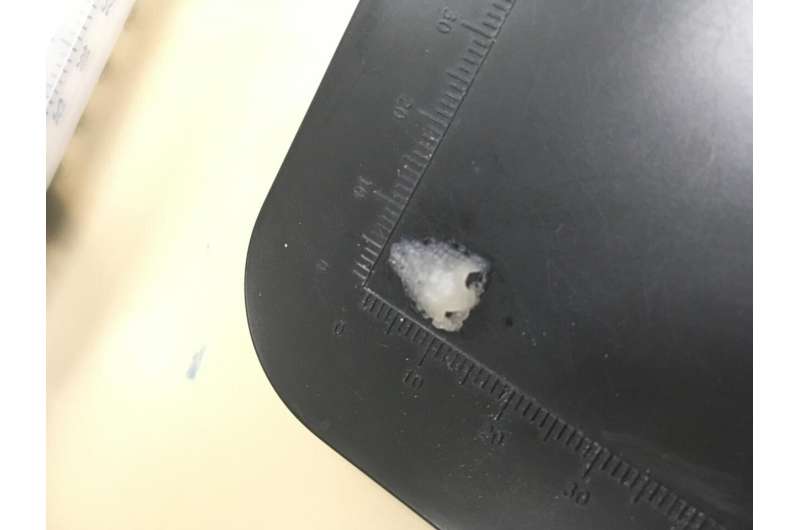
Professor Arda Gozen looks to a future someday in which doctors can hit a button to print out a scaffold on their 3D printers and create custom-made replacement skin, cartilage, or other tissue for their patients.
Gozen, George and Joan Berry associate professor in the Washington State University School of Mechanical and Materials Engineering, and a team of researchers have developed a unique scaffolding material for engineered tissues that can be fine-tuned for the tricky business of growing natural tissue. They report on their research in the journal, Bioprinting. The team also includes researchers from WSU’s Gene and Linda Voiland School of Chemical Engineering and Bioengineering as well as from the University of Texas-San Antonio (UTSA), Morehouse College, and University of Rochester. The lead author is Mahmoud Amr, who received his Ph.D. at UTSA.
In recent decades, researchers have been working to use biological material in 3D printing to create tissue or organs for patients recovering from injury or disease. Using 3D printing, or additive manufacturing, makes it possible to print complex, porous, and personalized structures and could allow doctors someday to print out tissue for a patient’s particular body and needs. To create biological structures, biological materials known as “bioinks” are dispensed out of a nozzle and deposited layer-by-layer, creating complex “scaffolds” for real biological material and providing a nice place for cells to grow.
Nature, however, has so far been more complicated than researchers can keep up with. Real biological cells like to grow on a scaffold that approaches their own properties. So, for instance, a skin cell wants to grow on a scaffold that feels like skin while a muscle cell will only develop on a scaffold that feels like muscle.
“The success of this method in manufacturing functional tissues relies heavily on how well the fabricated structures mimic the native tissues,” Gozen said. “If you want to grow cells and turn them into functional tissue, you need to match the mechanical environment of the native tissue.”
The way that researchers have traditionally varied their scaffolds was to simply remove trusses to make them softer or stiffer—a method that is too simple to address all the needed complexity in tissue engineering.
“We don’t have a lot of knobs to turn,” Gozen said. “You need more degrees of freedom—to create something softer or harder without changing the structure.”
The team of researchers developed a new bioink material that allows for customizing properties to closer approach what cells might need. The ingredients for their scaffold include gelatin, gum Arabic, and sodium alginate, which are all common thickening agents used in many processed foods.
Similar to the way a thick rope is made of braided strands, the researchers used three separate chemical processes to tie their three ingredients together into one scaffold material for printing.
Playing with the separate chemical processes then provides a way to finely tune the mechanical properties of the material, allowing them to make a softer or stiffer final scaffold.
“That gives you the capability of tuning the properties without changing the scaffold design and gives you an additional degree of freedom that we are seeking.”
By adjusting the chemical bonds between the rope strands, they didn’t change the material significantly, and it was amenable for growing cartilage cells.
The work is still in its early stages, and the researchers would like to figure out how to more precisely tune the process and final material. They might look at varying the composition of their three materials or printing at different temperatures, for instance.
Trying to imitate the vast complexity of natural tissue remains a challenge. Even a simple millimeter-sized piece of cartilage on the knee for instance, has three separate and distinct layers, each with different mechanical properties and functions.
Source: Read Full Article
